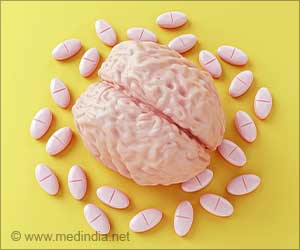New insights into why many animals sleep at night and are active during the day, while others do the reverse, have been provided by a new study.

‘New insights into why many animals sleep at night and are active during the day, while others do the reverse, have been provided by a new research.’





A team headed by Qun-Yong Zhou, UCI professor of pharmacology, examined the day/night patterns of monkeys (diurnal) and mice (nocturnal) and found that although both process light through the eyes in a similar way, the signals that determine sleep/awake modes are sent to the brain via different routes and produce completely opposite sleep/awake patterns. "Since humans are diurnal, this has clear implications for potential novel treatment of certain sleep or mood disorders," said Zhou, the study's lead author. Results appear online in Molecular Brain.
Zhou and his colleagues discovered that the sleep/awake switch exists in the eyes within the intrinsically photosensitive retinal ganglion cells, or ipRGC. Previously, a brain region called the suprachiasmatic nucleus, or SCN, was believed to house the master clock that keeps the body on an approximately 24-hour schedule.
The current findings give the eyes a more central role in the control of the sleep/awake cycle. In the nocturnal mice, ipRGC and SCN appear to function similarly, and either could serve as the timekeeper. But in the diurnal monkeys, the eyes' ipRGC seems to be dominant.
"Considering the long-held view of SCN as the master clock for our circadian rhythms, the idea that the eyes - or particularly ipRGC - are the commander in chief is somewhat surprising," Zhou said. "But it makes logical sense, as diurnal mammals are visually driven. The eyes not only guide us around during our wakefulness time, but they also dictate when we go to sleep."
Advertisement
Instead, Zhou and his fellow researchers discovered that the sleep/awake control mechanism differs in monkeys and mice before signaling to the SCN, in the neural circuitry controlling sleep and wakefulness. A novel but elegantly designed bifurcation of ipRGC to brain centers produces the inverse sleep/awake patterns for the monkeys and mice.
Advertisement
These findings challenge the long-presumed master role of the suprachiasmatic clock in all mammals. At least in monkeys - and possibly in humans and other diurnal species - ipRGC may be more important than the suprachiasmatic clock in determining when to be active and when to sleep.
"Our thinking makes evolutionary sense as well," Zhou said. "Early mammals, during the dinosaur age, are believed to have been nocturnal, and diurnal species came later. It is completely logical that this diurnality co-evolved with the vision dominance of diurnal mammals via the expansion of the wake-promoting ipRGC-superior colliculus pathway and the simultaneous diminishment of the sleep-promoting ipRGC-SCN pathway. Thus, light puts mice to sleep, but it wakes up monkeys and other diurnal mammals."
Source-Eurekalert









